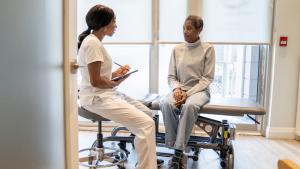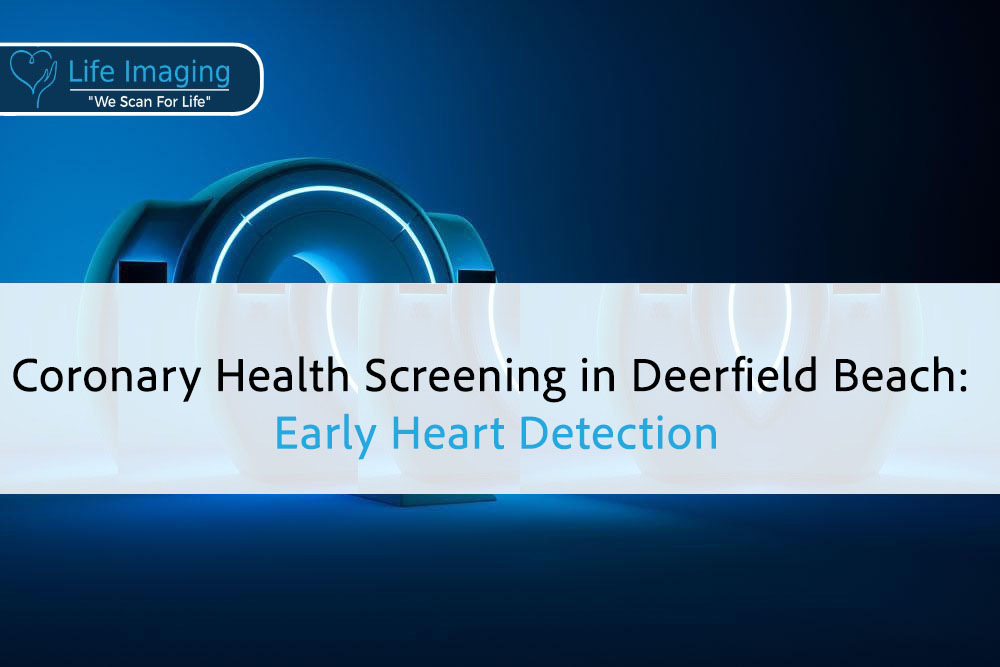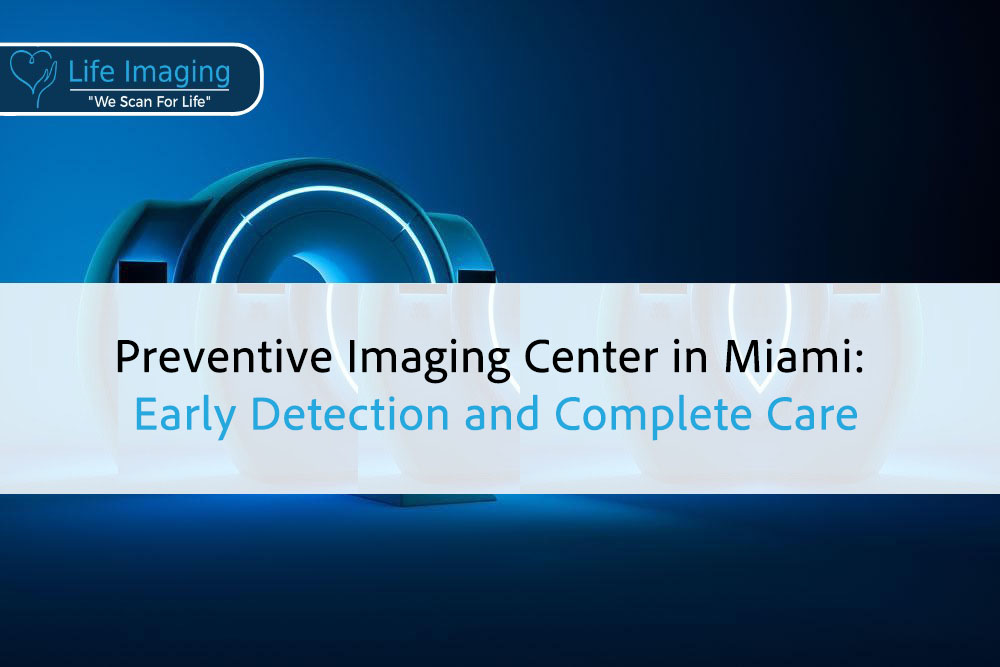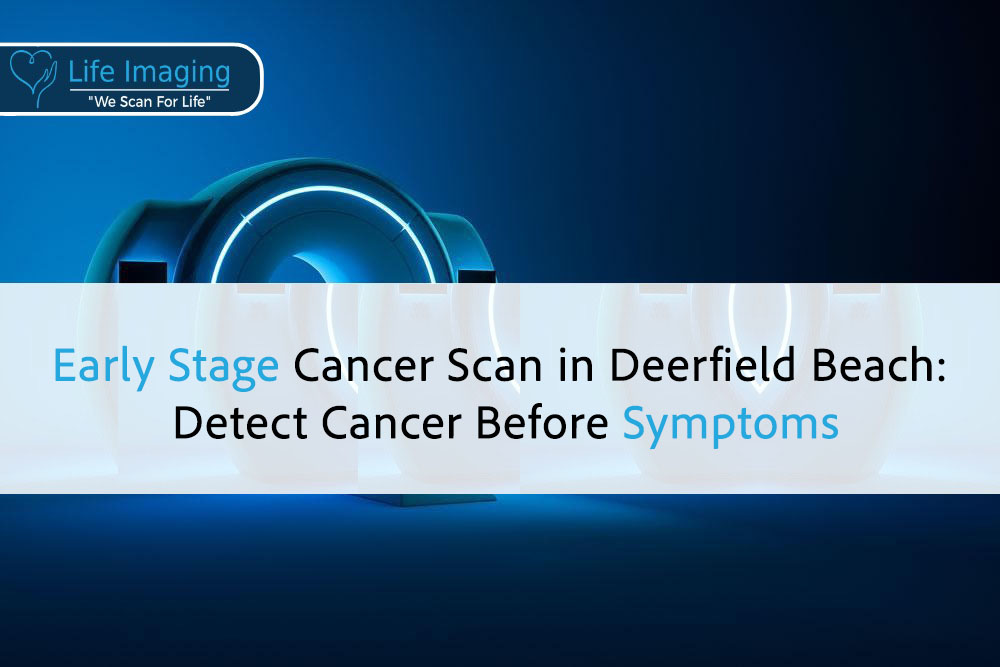
Coronary Artery Scan Near Me in Jupiter: Early Heart Health Detection
Introduction Your heart works hard every second of the day,

Chronic Obstructive Pulmonary Disease (COPD) is a persistent lung condition that causes breathing difficulties, significantly impacting the quality of life. Early detection and diagnosis are crucial for effective management of COPD, helping patients lead healthier lives. According to the Centers for Disease Control and Prevention (CDC), COPD affects millions of Americans, often remaining undiagnosed until it reaches advanced stages. Understanding how to screen and diagnose COPD can make a significant difference in the outlook for those affected by this disease.
Life Imaging Fla specializes in using advanced imaging technologies for the early detection of various health conditions, including heart disease and cancer. By leveraging state-of-the-art imaging techniques, they are at the forefront of identifying diseases early, which is vital in managing chronic conditions like COPD. Early screening allows for timely interventions that can slow disease progression, alleviate symptoms, and improve overall lung function.
In this comprehensive guide, we will explore in detail the importance of COPD management, the various methods for screening and diagnosis, and how imaging centers like Life Imaging Fla play a pivotal role in early detection. From understanding the risk factors to knowing the latest diagnostic technologies, this article aims to provide valuable insights into managing COPD effectively. With early detection, proper diagnosis, and timely treatment, patients can achieve better control over their condition, leading to improved health outcomes and quality of life.
Understanding COPD: Causes and Risk Factors
COPD, or Chronic Obstructive Pulmonary Disease, is mainly caused by long-term exposure to irritants that damage the lungs. Smoking is the leading cause, but other factors also play a role.
Common Causes and Risk Factors
– Smoking: Most people with COPD are smokers or have a history of smoking.
– Secondhand Smoke: Even if you don’t smoke, exposure to others’ smoke can increase your risk.
– Environmental Factors: Long-term exposure to air pollution, chemical fumes, or dust can contribute to COPD.
– Genetic Factors: A rare condition called Alpha-1 Antitrypsin Deficiency can also cause COPD.
Understanding these risks can help in taking preventive measures, making early screening crucial.
Symptoms and When to Seek Screening
Being aware of COPD symptoms can prompt timely medical consultation and screening. Early intervention can help manage the disease more effectively.
– Chronic Cough: A persistent cough, often accompanied by mucus, is a common symptom of COPD.
– Shortness of Breath: Difficulty in breathing, especially during physical activities, can be an early sign.
– Frequent Respiratory Infections: Repeated bouts of bronchitis or pneumonia can indicate COPD.
– Fatigue: Feeling unusually tired or weak can also point to lung issues.
– Persistent Symptoms: If you have ongoing respiratory symptoms, consult a doctor.
– Risk Factors: If you’re a smoker or exposed to lung irritants, regular screening is advisable even if symptoms are mild.
Early screening can lead to a timely diagnosis, allowing for better management and improved outcomes.
Effective Screening Methods for COPD
Screening plays a vital role in the early detection and management of COPD. Several methods can help identify lung issues before they become severe.
Spirometry is a common test to diagnose COPD. During this test, you breathe into a tube connected to a machine that measures the amount and speed of air you can exhale.
– How It Works: The test measures Forced Vital Capacity (FVC) and Forced Expiratory Volume (FEV1).
– What It Detects: Reduced airflow can indicate the presence of COPD.
Chest X-rays can show emphysema, one of the main forms of COPD, though they might not detect early-stage COPD.
– Purpose: X-rays help rule out other lung problems like infections or tumors.
– Limitations: They are not sufficient alone to diagnose COPD.
More detailed than X-rays, CT scans provide clearer images of the lungs and can detect emphysema and monitor disease progression.
– Advantages: High-resolution images offer a better assessment.
– Usage: Often used when X-rays don’t provide enough information.
This non-invasive test measures the oxygen level in your blood using a small device clipped to your finger.
– Usage: Helps determine how well oxygen is being transported in your bloodstream.
– Importance: lowers oxygen levels might indicate lung issues, prompting further tests.
Advances in Imaging for Early Detection
Modern imaging techniques are improving the early detection of COPD, aiding in more effective disease management.
Role of Advanced Imaging
Imaging centers like Life Imaging Fla use cutting-edge technology to detect early signs of lung disease, including COPD.
CT lung screenings are becoming essential in early COPD detection. These scans provide detailed images of the lungs, making it easier to identify abnormalities.
– What to Expect: A CT scan involves lying on a table while an X-ray machine takes multiple images.
– Benefits: These scans can detect COPD before symptoms become severe.
This test measures how well oxygen and carbon dioxide are transferred from the lungs to the blood. It’s helpful in assessing lung function in people suspected of having COPD.
– Procedure: Involves breathing through a mouthpiece while holding your breath for 10 seconds.
– Insights: Provides information on the efficiency of gas exchange in your lungs.
Understanding Diagnostic Criteria for COPD
Once initial screening tests indicate possible COPD, further diagnostic criteria are used to confirm the diagnosis and assess the severity of the disease.
The results from spirometry help categorize the severity of COPD:
– Mild COPD: FEV1 is 80% or more of the predicted value.
– Moderate COPD: FEV1 is between 50% and 79% of the predicted value.
– Severe COPD: FEV1 is between 30% and 49% of the predicted value.
– Very Severe COPD: FEV1 is less than 30% of the predicted value, and FEV1 is less than 50%, with chronic respiratory failure.
In addition to spirometry, doctors consider the following when diagnosing COPD:
– Patient History: Includes smoking history, exposure to lung irritants, and family history of lung disease.
– Physical Examination: Checking for signs of COPD such as wheezing, chest retractions, and use of accessory muscles for breathing.
– Patient-Reported Symptoms: Duration, severity, and impact on daily activities.
These diagnostic criteria provide a comprehensive view of the patient’s lung health and are essential for planning effective treatment and management strategies.

Understanding and utilizing these screening and diagnostic methods can significantly enhance COPD management. Early detection and accurate diagnosis pave the way for timely intervention, potentially slowing disease progression and improving the quality of life for those affected by COPD.
Treatment Options for COPD
Once COPD has been diagnosed, various treatment options are available to help manage the condition. Effective treatment can relieve symptoms, improve quality of life, and slow disease progression.
Medications play a key role in managing COPD. They help open airways, reduce inflammation, and treat infections.
– Bronchodilators: These drugs help relax the muscles around the airways, making breathing easier.
– Short-Acting Bronchodilators: Provide quick relief from acute symptoms.
– Long-Acting Bronchodilators: Used regularly to control chronic symptoms.
– Inhaled Steroids: These medications help reduce inflammation in the lungs.
– Usage: Often used in combination with bronchodilators for better symptom control.
– Phosphodiesterase-4 Inhibitors: These reduce inflammation and relax airways, helpful for severe COPD cases.
Pulmonary rehab is a program that includes exercise training, nutritional advice, and education about managing COPD.
– Exercise Training: Improves physical fitness and helps manage symptoms.
– Nutritional Advice: A healthy diet can support lung function and overall health.
– Education: Teaches skills to manage COPD, including breathing techniques and proper use of medications.
For some COPD patients, oxygen therapy is essential. It helps maintain oxygen levels in the blood when the lungs can’t provide enough on their own.
– Home Oxygen Therapy: Patients use oxygen tanks or concentrators to receive oxygen at home.
– Portable Oxygen Concentrators: Allow for mobility while receiving oxygen therapy.
In advanced COPD cases, surgery may be considered. Surgical options include:
– Lung Volume Reduction Surgery (LVRS): Removes damaged portions of the lung to improve overall lung function.
– Bullectomy: Removes large bullae from the lungs, which are air spaces that can interfere with breathing.
– Lung Transplant: Replaces a diseased lung with a healthy lung from a donor, considered in severe cases when other treatments fail.
Lifestyle Changes for Better COPD Management
Lifestyle changes can make a significant difference in managing COPD. These changes can enhance treatment effectiveness and improve overall wellbeing.
Quitting smoking is the most important step in managing COPD. Continuing to smoke will cause the condition to worsen.
– Support Programs: Counseling and support groups can help individuals quit smoking.
– Medications: Nicotine replacement therapy and prescription medications can aid in cessation efforts.
A balanced diet supports lung function and overall health.
– Nutrient-Rich Foods: Include fruits, vegetables, lean proteins, and whole grains.
– Avoiding Processed Foods: These can contribute to inflammation and other health issues.
Exercise is crucial in maintaining physical strength and lung health.
– Aerobic Activities: Walking, swimming, and cycling can increase lung capacity.
– Strength Training: Helps build muscle strength, making daily activities easier.
Chronic stress can worsen COPD symptoms and affect overall health.
– Relaxation Techniques: Practices like deep breathing, meditation, and yoga can help manage stress.
– Support Networks: Engaging with support groups or counseling can provide emotional support.
Monitoring and Regular Check-Ups
Regular monitoring and medical check-ups are vital in managing COPD effectively. Keeping track of symptoms and lung function helps in adjusting treatment plans as needed.
Regular spirometry tests can track the progression of COPD and the effectiveness of treatments.
– Frequency: Often done at least once a year or as advised by a healthcare provider.
– Purpose: Helps detect any changes in lung function early.
Keeping a daily diary of symptoms can help in identifying triggers and assessing the effectiveness of treatments.
– What to Record: Cough frequency, breathlessness, fatigue levels, and any medications taken.
– Benefit: Provides valuable information for healthcare providers to tailor treatment plans.
COPD patients are at higher risk for infections, so staying up-to-date with vaccinations is crucial.
– Influenza Vaccine: Annual flu shots help prevent respiratory infections.
– Pneumococcal Vaccine: Protects against pneumonia and other pneumococcal diseases.
Frequent visits to healthcare providers ensure that COPD management plans are up-to-date and effective.
– Assessment: Doctors can check lung function, review medications, and make necessary adjustments.
– Preventative Care: Early intervention for infections or other complications can prevent hospitalizations.
Role of Imaging in Monitoring Disease Progression
Imaging techniques play a significant role in monitoring the progression of COPD. They help assess the effectiveness of treatments and make necessary adjustments.
Though not usually used for regular monitoring, chest X-rays can detect complications like pneumonia or other lung conditions.
– Frequency: Typically done when new symptoms occur or as part of a comprehensive health check-up.
– Benefit: Helps rule out other conditions that may mimic COPD.
CT scans offer detailed images of the lungs, helping in the assessment of disease progression and evaluation of treatment efficacy.
– Usage: Used periodically to provide detailed lung images.
– Advantages: Better detection of structural changes in the lungs compared to X-rays.
MRI scans can sometimes be used to get detailed images of lung tissues, though they are less common compared to CT scans.
– Purpose: Offers clear images of soft tissues and can help in detailed assessment.
– Benefit: Provides an in-depth look into lung structure and functioning.
Advanced imaging techniques enable healthcare providers to get a clear picture of the lung’s condition, ensuring that treatment plans remain effective. Regular imaging combined with other monitoring methods offers a comprehensive approach to managing COPD, leading to better health outcomes for patients.
By adhering to these best practices, patients and healthcare providers can work together to manage COPD effectively, improving the quality of life and health outcomes for those affected by this chronic condition.
Living with COPD: Daily Management Techniques
Managing COPD requires daily attention to various aspects of health and lifestyle. Incorporating practical strategies into everyday routines can make a significant difference in managing symptoms and enhancing quality of life.
Breathing exercises can help improve lung function and reduce breathlessness.
– Pursed-Lip Breathing: Inhale through your nose for two seconds, pucker your lips as if to whistle, then exhale slowly through your lips for four seconds.
– Diaphragmatic Breathing: Focus on using your diaphragm to breathe, placing a hand on your belly to feel it rise and fall as you breathe in and out.
These exercises help increase oxygen intake and make breathing more efficient.
Conserving energy can help manage fatigue and make daily activities more manageable.
– Prioritize Tasks: Focus on essential activities and spread them out throughout the day.
– Take Breaks: Rest between activities to avoid overexertion.
– Modify Activities: Use tools and techniques that make tasks easier, such as sitting while preparing meals or using a shower chair.
These techniques help maintain energy levels and reduce the strain on your lungs.
Identifying and avoiding triggers can help prevent COPD flare-ups.
– Allergens: Avoid exposure to dust, pollen, and pet dander.
– Pollution: Stay indoors on days with high air pollution levels and avoid areas with heavy traffic.
– Smoking: Stay away from smokers and smoke-filled environments.
Avoiding triggers helps reduce symptoms and prevent exacerbations.
The Importance of Support Systems
Having a solid support system can make managing COPD easier and less stressful.
Family and friends can provide emotional and practical support.
– Emotional Support: Talking about your experiences and feelings can help alleviate stress and anxiety.
– Practical Help: Loved ones can assist with tasks such as shopping, cooking, and transportation to medical appointments.
Their involvement can improve your overall sense of well-being.
Joining a support group allows you to connect with others who understand what you are going through.
– Shared Experiences: Hearing from others can provide insights and encouragement.
– Educational Resources: Support groups often provide information on managing COPD and updates on new treatments.
Support groups offer a sense of community and shared understanding.
A dedicated healthcare team is essential for effective COPD management.
– Primary Care Physicians: Regular check-ups help monitor your condition and adjust treatments.
– Pulmonologists: Specialists in lung diseases provide expert care and advanced treatments.
– Respiratory Therapists: Offer guidance on breathing techniques, medications, and use of medical devices.
Regular communication with your healthcare team ensures comprehensive and coordinated care.
Coping with Emotional and Mental Health
Living with COPD can affect emotional and mental well-being. Addressing these aspects is vital for overall health.
COPD can lead to feelings of anxiety, depression, and frustration.
– Anxiety: Worry about symptoms and future health.
– Depression: Persistent sadness and loss of interest in activities.
– Frustration: Dealing with limitations and dependence on others.
Seeking Professional Help
Professional help can provide strategies and support for coping with emotional and mental health challenges.
– Therapists: Offer counseling and techniques for managing stress and anxiety.
– Psychiatrists: Can prescribe medications to help manage depression and anxiety.
Professional support can improve mental health and enhance quality of life.
Incorporating self-care practices can help manage emotional well-being.
– Mindfulness and Meditation: Practices like mindfulness and meditation can reduce stress and improve emotional balance.
– Hobbies and Interests: Engaging in hobbies and activities you enjoy can provide a sense of satisfaction and distract from symptoms.
– Physical Activities: Regular exercise not only benefits physical health but also improves mood and reduces anxiety.

These practices support emotional resilience and overall well-being.
Planning for the Future with COPD
Planning for the future is an important aspect of managing COPD. Being prepared can help reduce anxiety and ensure that you have the necessary resources and support.
Advance care planning involves making decisions about the care you would want to receive if you become unable to speak for yourself.
– Living Wills: Documents that outline your wishes for medical treatment.
– Healthcare Proxy: A person designated to make healthcare decisions on your behalf.
Planning ahead ensures that your wishes are respected and reduces the burden on loved ones.
Having an emergency plan in place can help you respond quickly to exacerbations or other health crises.
– Emergency Contacts: Keep a list of important phone numbers, including your healthcare team and close family members.
– Medication List: Maintain an up-to-date list of your medications, dosages, and schedule.
– Action Plan: Follow an action plan provided by your healthcare team for managing sudden symptoms.
Emergency preparedness can reduce anxiety and ensure swift action during health crises.
Considering your living arrangements can help ensure that your home environment supports your health needs.
– Accessibility: Make modifications to your home to ensure it is safe and accessible, such as installing grab bars in the bathroom.
– Support Services: Consider services like home health aides or meal delivery programs if needed.
A supportive living environment can enhance safety and independence.
Rehabilitation and Physical Therapy for COPD
Rehabilitation and physical therapy programs play a critical role in managing COPD, helping improve lung function and overall quality of life.
Pulmonary rehab programs are designed specifically for COPD patients to enhance lung function and physical endurance.
– Structured Exercise Regimen: Programs include aerobic exercises, such as walking or cycling, to improve cardiovascular health and muscle strength.
– Breathing Techniques: Training in techniques like pursed-lip breathing and diaphragmatic breathing to improve lung efficiency.
– Nutritional Counseling: Advice on a balanced diet to support overall health and lung function.
Participating in a pulmonary rehab program can lead to significant improvements in symptoms and physical capabilities.
Physical therapy offers tailored exercise plans to help manage COPD symptoms and improve mobility.
– Strength Training: Focus on building muscle strength to support better breathing and stamina.
– Flexibility Exercises: Activities like stretching to enhance mobility and prevent stiffness.
– Endurance Training: Exercises designed to improve aerobic capacity and energy levels.
Combining these elements can lead to a stronger, healthier body capable of coping better with the demands of COPD.
Through proper management techniques, effective support systems, and comprehensive care plans, individuals with COPD can actively participate in managing their condition, improve their quality of life, and plan for a healthier future.
Taking Control of COPD with Advanced Screening and Care
Living with COPD can be challenging, but with the right tools and resources, you can manage your condition effectively. Accurate screening and diagnostic methods are essential in identifying COPD early and tailoring the most effective treatment plans. Regular monitoring, along with lifestyle changes, empowers you to take control of your health and improve your quality of life. Implementing daily management techniques and breathing exercises can significantly reduce symptoms, while strong support systems and professionals help address emotional and mental well-being.
Staying proactive with your health is crucial, and at Life Imaging Fla, we are dedicated to offering advanced imaging and diagnostic services to support your journey. Our state-of-the-art technology helps detect lung diseases like COPD early, giving you the best chance for effective management and improved outcomes.
Don’t wait for symptoms to worsen. Take the first step toward better lung health by scheduling an appointment with Life Imaging Fla today. Our team of professionals is here to help you breathe easier and live a healthier life. Visit our website to learn more about our services and how we can support your COPD management journey.

Introduction Your heart works hard every second of the day,

Introduction Your heart works around the clock, but changes inside

Introduction Your heart works nonstop, often without a single complaint.

Introduction The best part of getting older is having time

Introduction Good health isn’t just about treating problems, it’s about

Introduction Cancer often begins quietly, long before you feel anything

* Get your free heart scan by confirming a few minimum requirements.
Our team will verify that you qualify before your scan is booked.
Copyright © 2025 Life Imaging – All Rights Reserved